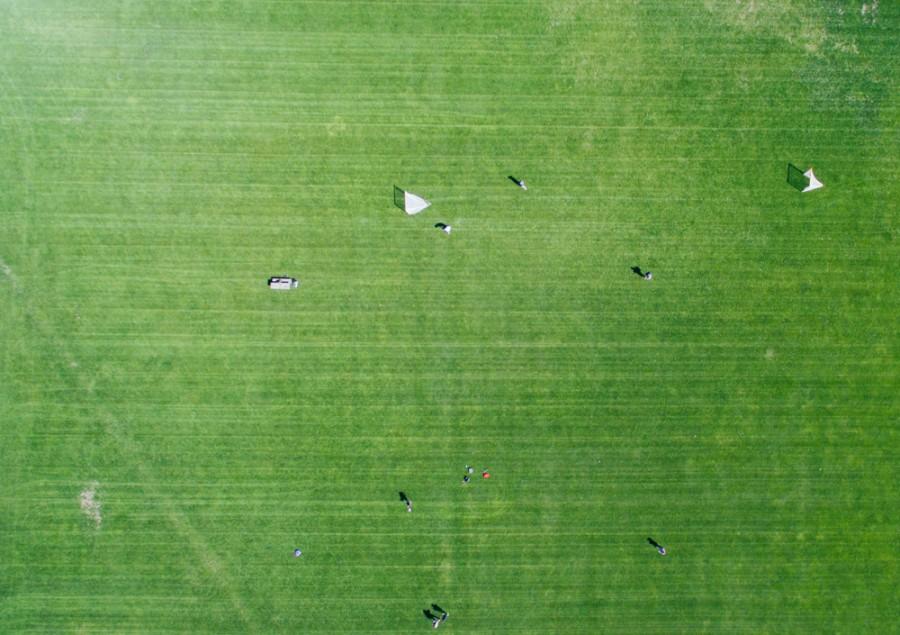Ankeny Field: 112 Years of Leisure
112 Years of Leisure
April 7, 2016
Over the past week or two, the weather has changed from the characteristic wet, cold days of winter to the warm, bright days of spring. The trees are budding and the flowers are blooming. With the change of seasons, Whitties are congregating on Ankeny Field–as is per the yearly tradition. Folks are sunbathing, playing lawn games, blasting music, tossing frisbees and generally celebrating their liberation from winter.
For over a hundred years, Ankeny Field has been the host of such gatherings and has been an important part of Whitman campus’ life and culture. However, it was not originally the open, inviting space that students consider it to be now. Ankeny has morphed and developed over time, much like the campus itself.
Planning for Ankeny Field began in 1902 and was named after Levi Ankeny, who was a banker, US Senator and trustee to Whitman College at the time. Levi Ankeny financed the field and also donated large sums of money throughout his life, especially during periods when Whitman was struggling financially. From documents found in the Penrose archive, the original Ankeny Field had a baseball diamond and a football pitch with a quarter mile track around it. Bleachers surrounded the baseball stadium and fences divided the field, preventing students from easily walking across, as is done now. Additionally, there was little room to lounge around as it was largely dedicated to sports teams. At its founding in 1904, Billings Hall (where Maxey Hall currently is) and Memorial Hall were the only buildings that bordered it.

During this time, women were excluded from participating in activities on Ankeny outside of watching sports as it was considered the men’s field; female students had to use a smaller field that would have been behind the Hunter Conservatory (where the music building is now).
After its establishment, Ankeny almost immediately began to change. In 1906, a landscaping architect recommended that Ankeny Field be demolished to make room for more buildings, with around 50 acres of fields being established elsewhere. The student body largely rejected the idea and a later campus historian remarked that the College Administration then adopted the idea of “maintaining a large central open space surrounded by an enclosure of buildings.” From this point onward, Ankeny went from a sports field to the backbone of the campus in which developments were considered in relation to it. Most, if not all buildings that hold classes have thus been around Ankeny Field.
As the decades progressed, Ankeny Field diversified in the activities it sponsored. For the first part of the twentieth century, Whitman hosted collegiate football games in the Pacific Northwest, playing schools such as Oregon State University and the University of Washington. During the 1907 semifinals home game, between two to three thousand students and Walla Wallans stood on Ankeny in attendance.

During this time, “class fights” would form on Ankeny where the sophomore and first-year classes would hit and throw rocks at each other in pitched brawls. In the same vein, pranks were regularly played on Ankeny. During the 1950s, the outfield fence that surrounded Ankeny’s baseball field was stolen and wrapped around Memorial Hall by a coalition of Fraternity men.
Ankeny was also used for more formal events. At the onset of the First and Second World Wars, Ankeny was used as a means of recruiting troops from Whitman as army officers would conduct drills on it for male students to watch and participate in. For many years, Ankeny was also the site of graduation ceremonies and various all-student body activities.
Eventually, Whitman moved its football field and abolished its gender discrimination policy for Ankeny. In the late 70s, the baseball field was taken out and Ankeny has been more or less the same for the past thirty years. The landscaping has changed, trees have been added and removed, as has different sculptures and pieces of art. Instead of being the host of seasons of baseball and football games, Ankeny has become a center for intramural sports and the occasional ultimate frisbee game.
Throughout the history of Whitman College, Ankeny Field has contributed in different ways to campus culture. From hosting sports games to being the center of campus, Ankeny has been an important part of the lives of students for over a hundred years.






